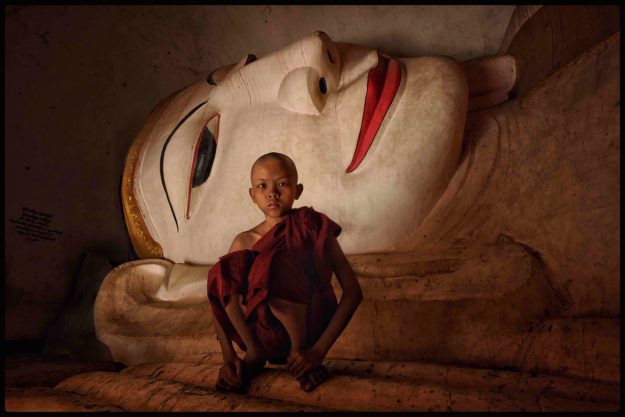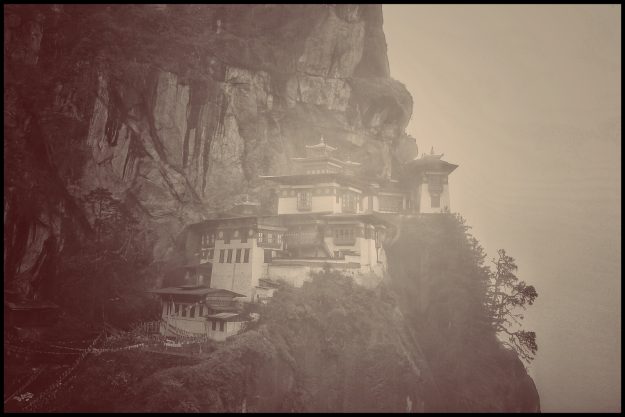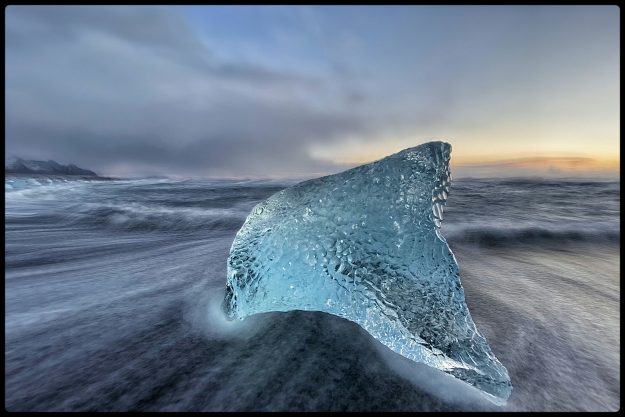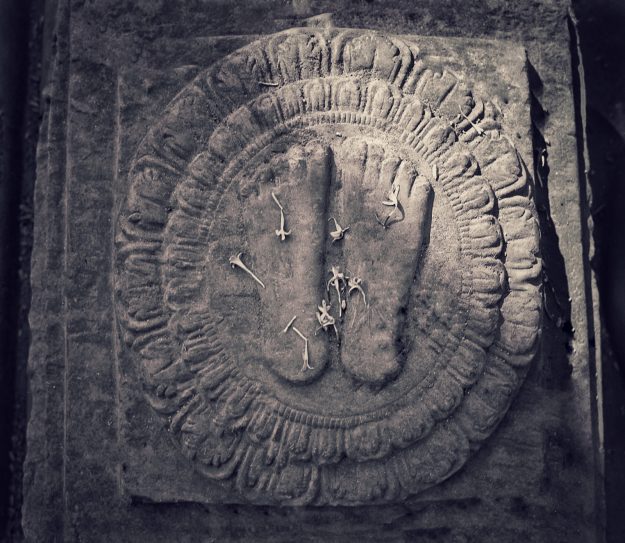YOUR CART
- No products in the cart.
Subtotal:
$0.00

From a very early age, documentary photographer and National Geographic explorer Chris Rainier has been driven to understand the sacred. He has traveled to all seven continents, camera in tow, capturing natural beauty, from the peaks of the Himalayas to the sands of the Sahara Desert. With wonder in his voice, he tells me, “I’m always in search of the answer to the questions that we all eventually ask: Why are we here? And what is this all about?”
Rainier’s career began in the early 1980s, when he worked as noted landscape photographer Ansel Adams’s last photographic assistant. To this day, Rainier cites Adams as a major influence on his photographic mission and philosophy. Adams was a lifelong advocate for environmental conservation, and he imparted upon Rainier the importance of using photography as a tool for social change. Taking this message to heart, Rainier has published multiple photography books, focusing on the preservation of the planet’s last wildernesses and endangered traditional cultures.
In his latest book, Sacred: In Search of Meaning, Rainier shares a collection of photographs from his enduring journey toward the sacred. Shot in locations and cultural sites across the world, Sacred explores how various cultures understand the sacred and how that understanding unites them. Interwoven throughout the book are essays on the sacred by leading authors and spiritual thinkers, including Matthieu Ricard, Pico Iyer, and Terry Tempest Williams. I spoke with Rainier in July to discuss what he learned about sacredness from his travels, how photography can serve as a tool for change, and what makes a space—whether it’s natural or man-made—sacred.
When did this search for the sacred begin for you? I wasn’t always aware of it, but I think I had been on that journey right from the start due to my upbringing. My father was South African, and I was born in Canada but spent a lot of my life in Australia, Africa, Canada, and out in the wilderness. Connecting to primordial landscapes unfolded for me at a very early age. I also had some remarkable mentors along the way, such as my great-aunt, who was a classical composer and quite a deep thinker. She lived in London, and she would have these salons on Sundays with her friends, many of whom were great artists of the time, and I was invited to these remarkable existential conversations about spiritualism, Buddhism, and the meaning of life, all at the age of 14. I think those experiences started me on a very serious journey of going off on my own in search of what this life is all about.
In the book’s preface, you write that the idea for Sacred came to you in a “flash of awareness.” Can you describe this moment? As a photographer who has spent my life on a variety of different projects, my underlying motivation has always been in search of the sacred. I’m always in search of the answer to the questions that we all eventually ask: Why are we here? And what is this all about? I wanted to use photography as a tool to get around the world to go in search of that, and I think the desire to do this photographic book on that search for sacredness had always been there in a subconscious way.
Then, as many of us experienced during COVID, there were these moments of awareness—a reality check. In a flash of a moment, I realized this was the time to do it. I had thousands and thousands of images of sacred places. It was in the past couple of years that I realized I was ready to review everything I’ve done and go looking for a few more images. Obviously, COVID was trying for a lot of people, but it also allowed many people to think through what life is all about. That period of time gave me a chance to double down and ask, What is sacred in this moment of such tragedy and mortality? So that was another reason I decided to intensely dive into the subject.
Can you tell me about your own spiritual philosophy in life? My spirituality is a mash-up of quite a few things. Right out of college, I worked for the landscape photographer Ansel Adams, and I loved his work and philosophy of the landscape. Soon after that, I traveled to Asia and I ended up living in a Buddhist monastery in Ladakh, India, for about three months. I began to appreciate Buddhism and that sense of responsibility for the way you conduct yourself.
And because of all my travels, I began to realize that there are multiple realities. I learned about different religions, including many indigenous religions and different forms of spiritualism, animism, and worship of the land and mythological beings. My spiritual journey, which still continues, is a hybrid of everything that I’ve experienced and a desire to keep searching. I’m not searching for any one answer, because I don’t think there is one, but I think there’s a theme that runs through every religion or sense of spiritualism. It’s a way of behaving, a way of being aware of karma and your sense of responsibility. It’s a way of being aware of how you conduct yourself not only personally but to the planet, to nature, to all sentient beings, and to other humans.

The book has several photographic spreads of temples and monasteries in places like Cambodia, Myanmar, and the Himalayas. Do you feel that there’s anything inherently sacred to these places? The book is a combination of powerful, natural landscapes, such as the Grand Canyon or the Himalayas, but also sacred sites, places where humans have decided to build structures, like Machu Picchu or the Taj Mahal. I would often discuss this with Travis Price, an architect and friend of mine who contributed to the book: Was Machu Picchu built because it’s a sacred place? Or does it become a sacred place once you’ve chosen it as a sacred place, and therefore, does the architecture combined with the landscape make it a sacred place? Or a third option, do we look back on these places in a romantic way as they’re crumbling, and think that they’re sacred because they’re from a different era, even if they were never made to be a sacred place?
To me, there’s no answer. But I just know when I’m in certain places—like Angkor Wat in Cambodia or crumbling ruins in the middle of the Sahara Desert—that I feel a sense of power, intention, and sacredness there. My job as a visual storyteller was to go to these places and photograph them, and this is where I learned a lot from Ansel Adams. Using the tools that you have as a visual artist, you can create a feeling so that when you look at an image, it holds a sense of power or sacredness. This is called equivalences. So I look at a place, I feel a powerful sense of sacredness, and my job—once I’ve taken that photograph and worked in a digital darkroom—is to hopefully give the audience an equivalent feeling to the feeling that I had at that place. That’s what I was trying to do with those photographs, because I felt an honest sense that those were very powerful places.
While this book was a personal search, it was also an invitation to give voice to other people who have thought about that sense of sacredness and what sacred means.
What decisions go into displaying a photograph in black and white versus in color? That’s a dilemma. For many years, I was strictly a black-and-white photographer. I was deeply attracted to Ansel Adams’s sense of gray, black, and white to speak of things that are deeply spiritual—things that are hard to describe with words. It’s only recently, in the last ten to fifteen years, that I’ve been comfortable working in the color realm. It’s all part of the palette, like a painter sitting down and thinking, “Okay, I’ll use that pigment and that mixture of colors with that brush.” Or, like a writer who strings a sentence together with a beautiful bouquet of certain adjectives and nouns to create a mood. My choice of color or black and white is an extension of wanting to allow people to have that equivalency, that connection to the subject matter. I often work in very muted colors, just in that realm where it’s beyond black and white but barely into color. There’s something in there that almost creates a dream state, a sense of spiritualism.

The brain works on remarkable subconscious levels. We react to colors on a daily basis, and as a visual storyteller, I need to understand and control that psychology of color so I can take you on a journey that elicits emotional reactions. I remember the first time I drove into Yosemite, which is where Ansel Adams did a lot of his photography, I thought, “Oh wow, it’s in color,” because I had grown up on his black-and-white images. Before I had ever been there, he took me on a different journey to a magical place. That’s what photography has the power to do. It’s squarely based on what’s real, but I can take you on a journey that allows me to peel back some of the layers and reveal that sacredness.
The book struck me almost as a love letter to the earth and its people. But on the other hand, its message feels very urgent, like a wake-up call to look at what is at stake right now, in this moment. How can photography act as a tool for social transformation in our modern age? Having grown up around the world and been blessed to have a family that travels, I saw at a very early age that things were not in perfect order. There were climate issues beginning way back in the sixties, and I could see their impact on traditional societies. And, of course, I was attracted to Ansel Adams’s work and how he made these beautiful images with a powerful social message around conservation. He was one of the great conservationists of our time, and I learned a lot from him. I loved how his photographs were beautiful—they were celebrations of life—but he was clear about his message that we need to stop destroying the planet. So for me, what evolved was a desire to show the beauty but also to capture a sense that something is not right here. There’s a sense of foreboding, there’s something slightly out of tune, as if an orchestra has a violin that’s off pitch. This book is a warning to pay attention, and also a celebration of the beauty and the sacredness of our planet.

Is sacredness a way of being as well? Yes. We live busy, complicated lives. And I’m not a monk, I don’t live up in a monastery looking over craggy mountains, with a scheduled time to meditate every day. But I think one can try to walk in grace. It’s trying to do one’s best each day. And for me, I feel so privileged to be alive at this incredible moment. The world is going through massive changes, but I choose to look toward the light and appreciate what we do have.
What did you discover about the meaning of sacred while creating the book? The book Sacred is not only about the photographs, but even more importantly it’s asking the question, “What do different cultures think of the sense of sacred?” What is sacred to a Muslim, to a Buddhist, to an atheist, to a lone hunter in the jungles of the Amazon? And while this book was a personal search, it was also an invitation to give voice to other people who have thought about that sense of sacredness and what sacred means in a world that is sometimes profane. I think there’s a thirst right now in our culture for joy, happiness, meaningful dialogue, and a sense of sacredness. I hope this book allows people to see a different point of view.
My journey in search of sacredness is certainly not over, but I think as one gets older, sacredness becomes about love. It’s about family, community, and being deeply appreciative of what you have. Everybody has their own sacred journey, though they may not use those words. We’re on this planet for such a short period of time. And we get caught up in our brain with the heaviness of things. We certainly live in a profound period of transition, but I’d urge people to be aware of the beauty around them. Sacredness is all around us.

As an aside, NASA recently released the first images from the James Webb Space Telescope. The cosmic landscapes certainly struck me as sacred. What are your thoughts on the photos and the act of looking outward into space in search of the sacred? I think those photographs are an affirmation that we are not alone. And I’m not talking about little green men or things like that. But we have to keep our minds open and affirm with ourselves that if, in fact, space and time are infinite, we can’t be alone. There is something out there. When I look at those images, being so incredibly visual, it gets me very excited because they allow people to frame up the possibility that we’ve only just started discovering that there are things out there beyond our own backyard. There’s infinity, and one day, we might connect to that higher power.
This is not all about us. It’s about everything else, actually.
Jane Goodall and I were talking yesterday about what it would be like once we evolve as a species to the point where we can understand the language of animals—whether it’s a bumblebee or a dolphin. Once we have that translation, our level of understanding and respect for all sentient beings on our planet will also evolve. I think there will be an enlightenment that humans hopefully will go through where we realize that this is not all about us. It’s about everything else, actually.